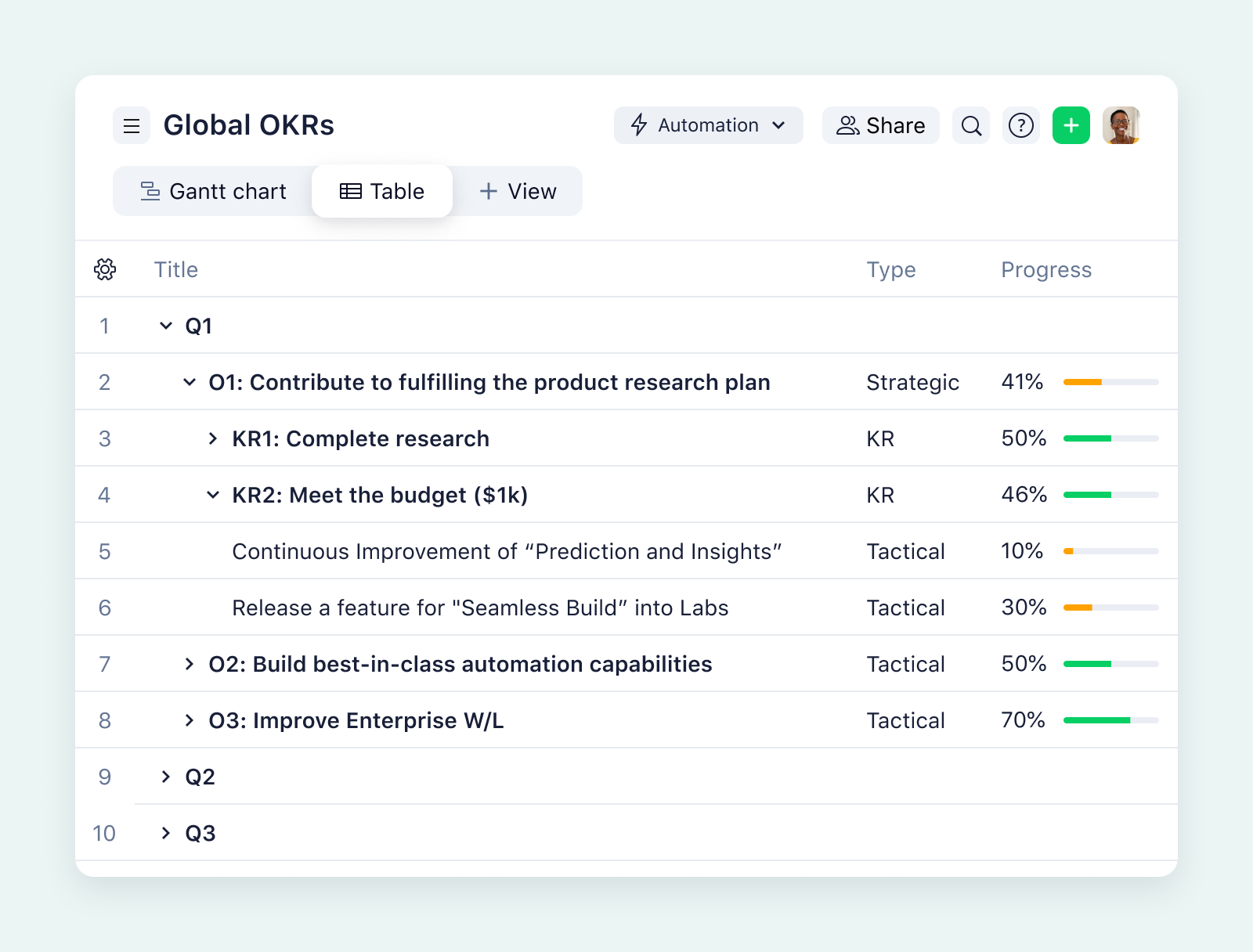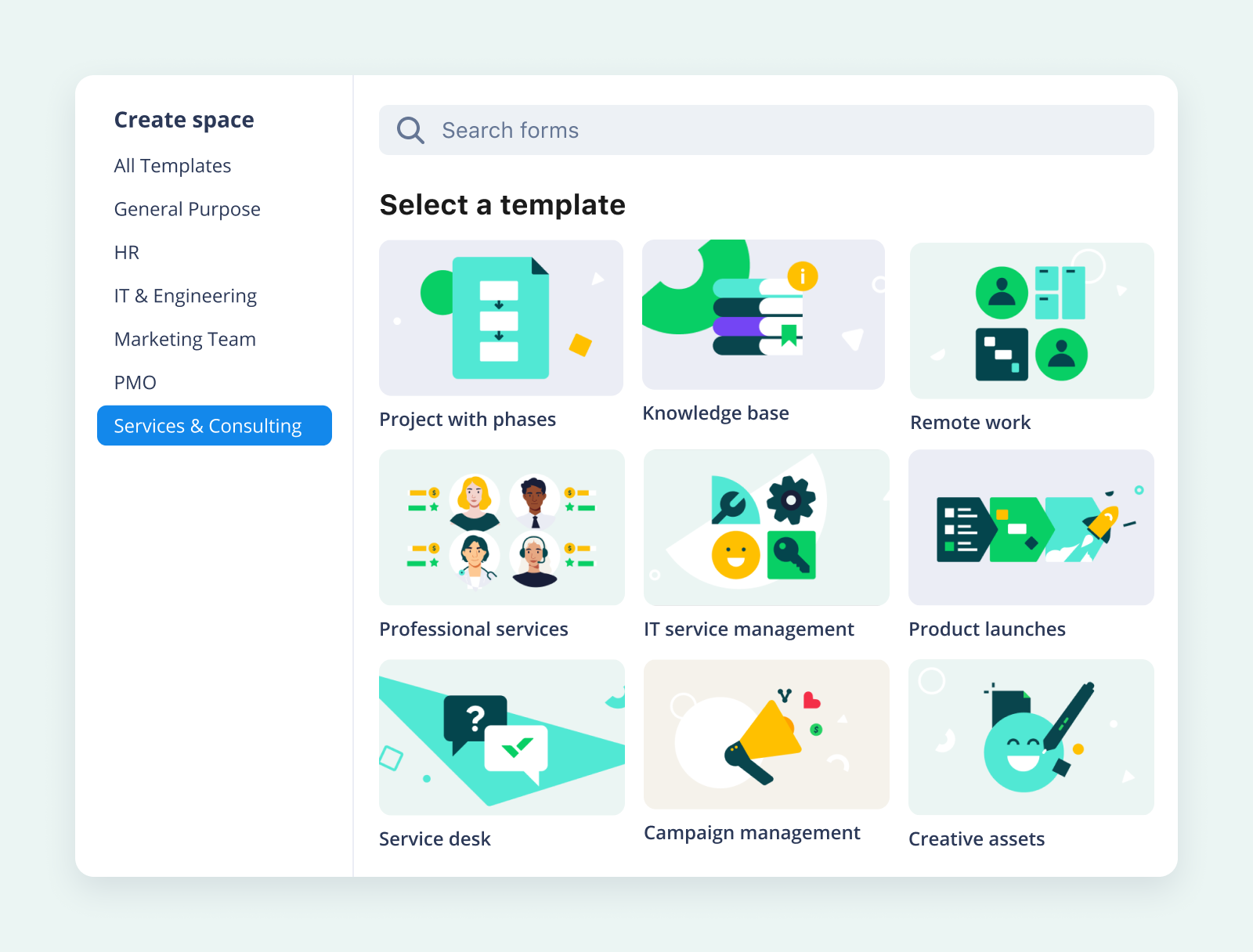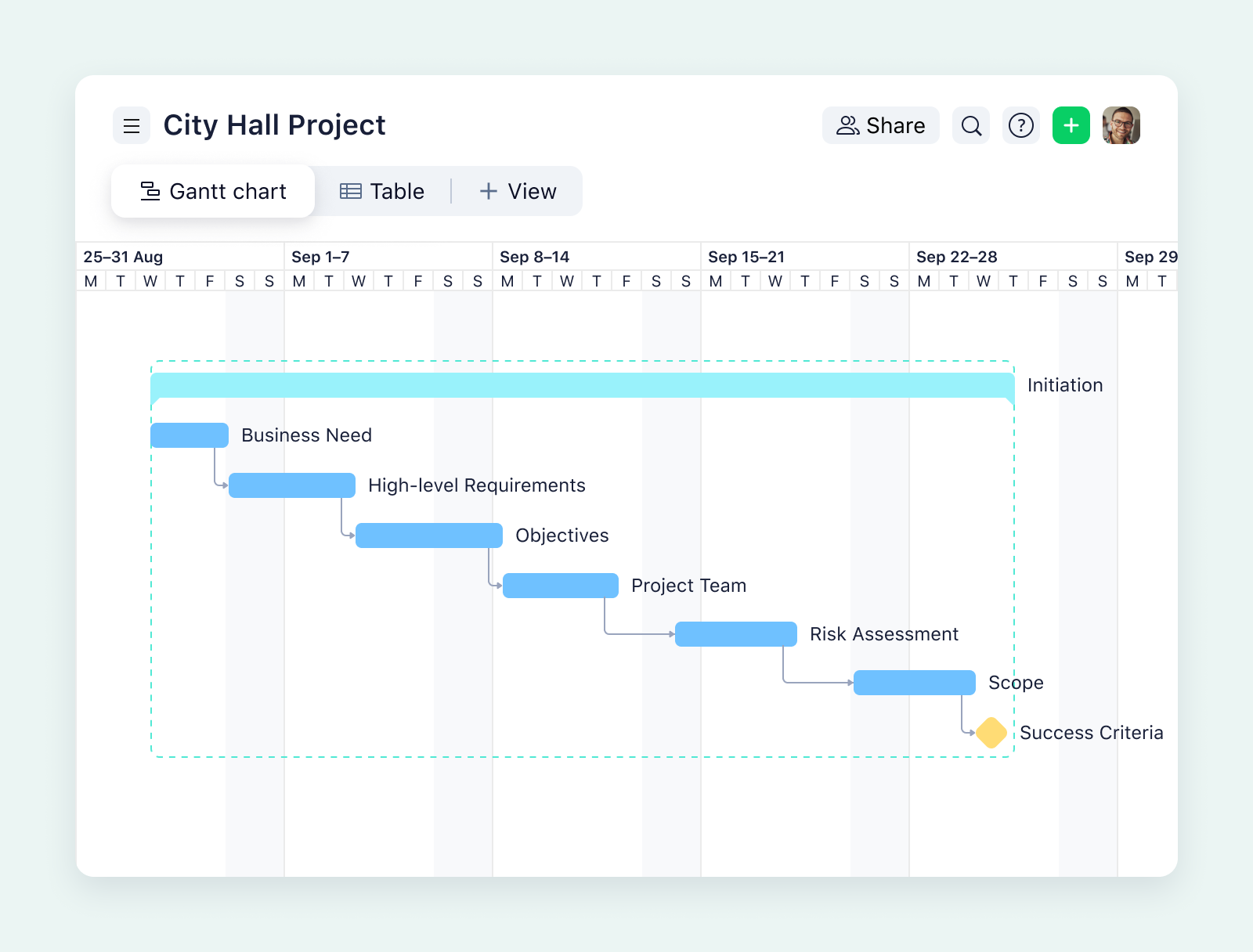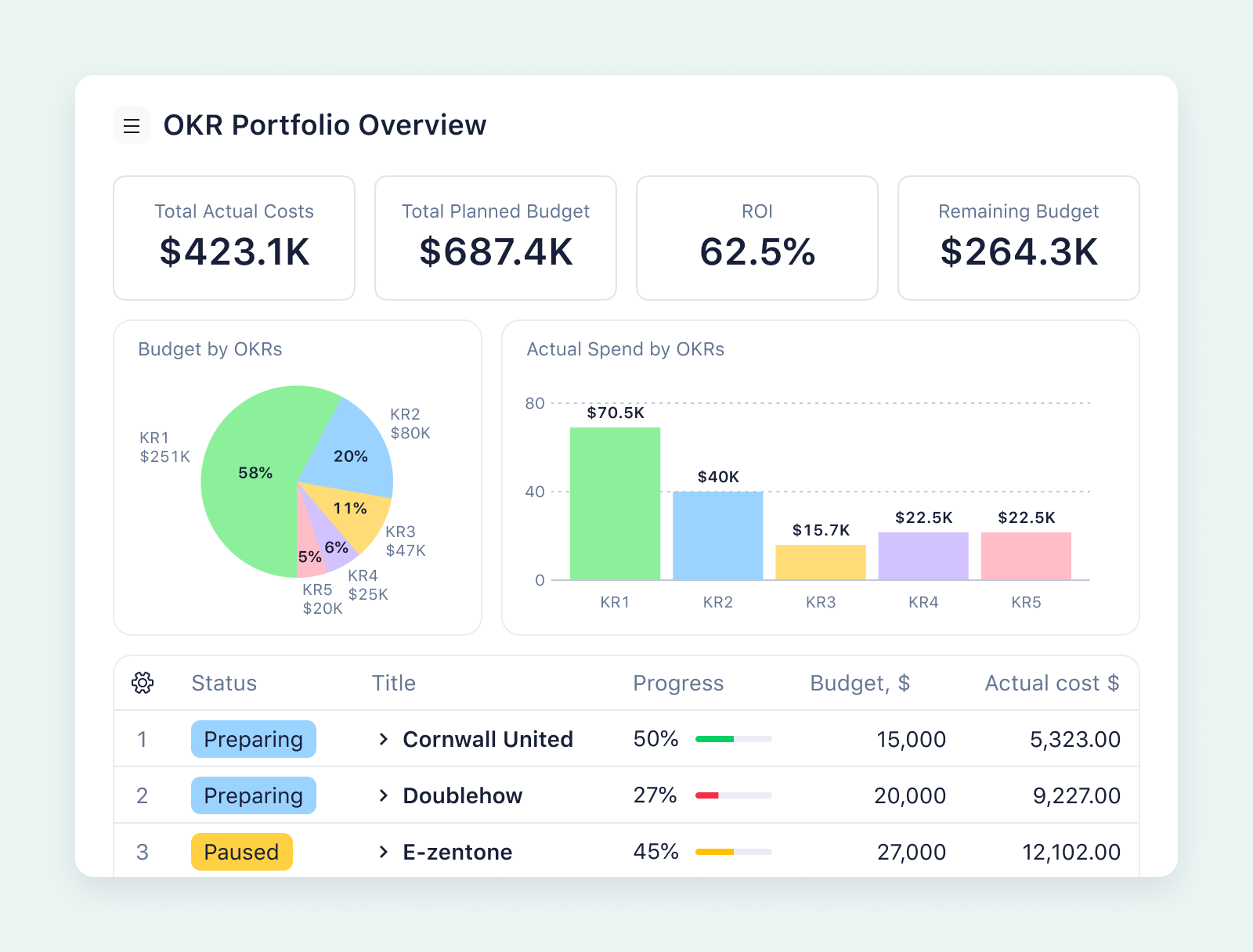Key takeaways:
- What is a five-year plan? This is a strategic framework to define long-term aspirations and establish measurable goals for personal or business growth.
- How does a five-year plan help teams? It aligns team members towards shared objectives, enhancing accountability and clarity in roles.
- What are key components of a five-year plan template? Include a vision statement, mission statement, specific goals, action steps, milestones, and evaluation methods.
- What challenges arise in long-term planning? Market changes, risk management, and resource allocation can complicate achieving planned goals.
- How can Wrike assist in creating a five-year plan? Wrike provides templates and tools for effective planning, progress tracking, and resource management.
Where do you want to be in five years? You must have pondered on this question at some point, but only a few people take the deliberate steps to make that vision a reality.
Five years from today,
- What specific targets do you aim to hit?
- What milestones do you want to celebrate?
- What achievements would make you proud?
In this article, you will learn how to use the five-year strategic plan template to chart the course for your professional success. That’s not all. We will also show you how to use Wrike’s templates, like the action plan and business goals templates, to simplify complex processes.
Build your five-year plan with Wrike — start your free trial now.
The importance of a 5-year plan
Why think five years ahead? Life is unpredictable, but having a five-year goal plan template can make a world of difference for your team. It’s about growth — not just any growth, but the kind that’s planned and steady. You need to consider where your business will be in the next five years.
- Are you looking to double your client base?
- Do you want to expand to new markets?
- Do you want to launch a series of new products?
A five-year plan template helps you map a clear path to these objectives. With a good plan, everyone knows what’s needed and when. It helps in creating a shared vision. This way, every team member understands the achievable goals and sees how their role directly contributes to larger milestones.
A five-year plan template doesn’t mean you have to lock yourself into the future. It simply helps you set a direction while staying flexible. You can even design your plan to help coordinate efforts across your various teams.
The benefits of creating a 5-year plan
Creating a personal five-year plan? That’s a solid move! Setting a plan in motion can help you achieve your long-term personal goals. A personal five-year plan:
- Creates a bridge between your current state and where you want to be
- Allows you to set strategic goals and make adjustments as needed
- Facilitates better prediction of future needs and challenges
Meanwhile, a business five-year plan:
- Instills a sense of accountability among team members
- Structures your company’s objectives for growth
- Optimizes resource allocation, ensuring you have the right tools to achieve your goals
- Outlines what everyone needs to do without confusion
Challenges of long-term planning
Things change fast, right? What works today may not work next year or next month. When planning for the long haul, one big challenge is staying relevant. You’ve got to anticipate changes in the market, technology, and even customer preferences. Also, deciding how much time, money, and manpower to put into projects that won’t pay off for a while can be tricky. You don’t want to spread your resources too thin but, at the same time, you need to invest enough to see real results down the line.
Another challenge is risk management. The longer the timeline, the more risks you face. Economic downturns, new competitors, shifts in regulations — you name it. Planning for these risks without seeing the future is tough.
So, what’s the takeaway here? Planning for the long term is no walk in the park. It demands a whole lot of grit. But don’t let these challenges scare you off. Understanding them is the first step to mastering them. And remember, every big achievement starts with a plan, no matter how far off the payoff might seem!
Need a hand navigating the challenges of long-term planning? Try Wrike.
Components of a 5-year plan template
A five-year plan template has certain elements designed to guide your strategy effectively. Here’s a brief look at each part of the components:
- Vision statement: Outlines your long-term aspirations, setting the direction for future growth
- Mission statement: Defines your current operations and how they contribute to achieving your vision
- Goals and objectives: Specific, measurable targets that you aim to achieve within the five-year period
- Action steps: Detailed tasks necessary to accomplish your goals, outlining the path to success
- Milestones: Key achievements that mark significant progress toward your goals
- Evaluation and review: Regular assessments to ensure the plan remains relevant and effective
We’ll take a closer look at each of these components in detail in the next section.
How to make a 5-year plan template
Let’s break down how to create a five-year plan into simple, actionable steps. You’ll see — it’s not as technical as it sounds!
Step 1: Define your vision and mission
Your vision sets the tone for every strategic decision while your mission details what your business does, who it serves, and how it serves them. This vision will help you endure the ups and downs and keep your team focused on their goals.
Gather your team members and start a brainstorming session.
- What are the core values that define your business?
- How do your values translate into a long-term future?
Look at your current business goals and long-term strategy. How do these fit into a five-year strategic plan? This might involve scaling operations, exploring new markets, or designing new products. These goals should contribute to a larger narrative about what you want your business to represent. To refine your vision and mission, conduct a SWOT analysis. This analysis will help you achieve a more measurable vision.
| Strengths | Weaknesses |
|
|
|
| Opportunities | Threats |
|
|
|
Step 2: Set long-term goals and objectives
Now that you have a clear vision of the future, it’s time to translate that into tangible, actionable goals and objectives.
Understand where your industry stands and where it’s headed. You can conduct an industry analysis to provide insights into trends and challenges you might want to address with your goals.
Your goals should be clear and specific, without ambiguity about what constitutes success. For instance, instead of saying “increase market share,” specify “achieve 15% market share.”
Tip: Use the business goals templates in Wrike to outline your company’s objectives.
Step 3: Create action plans
What’s an action plan? An action plan outlines the specific tasks needed to achieve your milestones. Start by creating a roadmap to visualize the steps needed to achieve your company’s five-year targets. Wrike’s product roadmap template outlines the steps to achieve each goal, including the required resources and the timeline for each step.
Next, develop a detailed plan to achieve your most ambitious business targets. Using a plan template can help streamline the planning process and guarantee no element is overlooked. For example, Wrike’s action plan template ensures that every team member knows exactly what to do to help you stay on track and reach your goals.

As you lay out your plan, it’s important to identify areas for improvement within your current operations. A well-defined plan that considers these opportunities helps clarify your business’s vision to stakeholders and investors.
The goal here is not just to plan but to act. With Wrike, you’re equipping your team with the tools they need to execute flawlessly and stay focused on your goals.
Step 4: Create milestones
Why are milestones a game changer? Milestones break down your five-year goals into bite-sized pieces. They give you a fantastic way to monitor progress and make adjustments. You can set a timeline for completion so you can know how to pace your efforts. For each milestone, you should have a detailed plan of action.
- What needs to happen first?
- What resources will you need?
- What do you need to prioritize?
Laying this out can help prevent surprises. Review your plan regularly to see if you’re on track. Record your milestones in a five-year plan worksheet or digital tool where everyone can see them. Align your goals and strategies to ensure every team member pushes in the same direction.
Step 5: Evaluate and review
Establish a system to evaluate the goals you want to achieve. For example, you could implement a 30-60-90-day plan. Your plan also needs regular reviews to adjust to market changes. Break down your monitoring into manageable chunks. What should be achieved in the next 30, 60, or 90 days? This short-term focus helps keep everyone on their toes. Make sure your plan includes a timeline for reaching key performance indicators.
Regularly revisit and revise your plan to reflect changing market conditions. Your roadmap isn’t set in stone. It should evolve based on what works best. Wrike’s analytics boards can help you gain insights into performance. You can even tailor your analytics board to reflect your business objectives and track corresponding metrics accurately.
Case study: How Backcountry used Wrike’s templates to build a plan
Backcountry’s creative team, known for their passion for the outdoors and expertise in curating high-quality outdoor gear, faced a common challenge: turning great ideas into concrete results.
Wrike’s templates became a game changer for them. Starting with a template for each project type — whether launching a new video or releasing a product line — the team could standardize the steps involved in bringing a project from concept to completion. Each template was customized to include stages such as ideation, design, approval, and launch, making sure all bases were covered.
Everyone on the team, from marketing to merchandising, could add their input directly into the template, ensuring that all perspectives were considered. This collaborative approach within a structured template ensured that once a project received the green light, every team member knew exactly what to do and when without any confusion.
My work-life balance has improved simply by using templates to justify why we need a certain amount of time to work on a project. I can push back and say, ’This is why we need X amount of time, and this is how we are addressing this problem.’
Georgia Steenberge, Designer Director, Production
Build a robust 5-year plan in Wrike
So, what are your personal and professional goals? How do you plan to achieve your short-term and long-term goals? Do you have them written down? You don’t have to worry about manually planning and hitting your goals when you can build a robust five-year plan using project management software like Wrike.
- Allocate resources in real time and adjust assignments based on project priority.
- Generate detailed reports that help you analyze how resources are being used.
- Seamlessly integrate your other business tools and pull data from different sources to comprehensively view your resources.
- Set up automated alerts and notifications to inform team members about upcoming deadlines.
- Track time spent on tasks and manage project budgets.
- Customize your project spaces to include fields specific to your long-term goals.
- Use a Gantt chart to visualize your project timeline and adjust dependencies.




